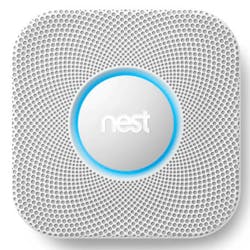Time to Get Smart
I recently had the pleasure of moderating a live webinar at Nest Labs in Palo Alto. Nest is aggressively courting HVAC contractors.
Nest has to battle against its image as a DIY thermostat. Fortunately for the company, it landed Gene LaNois, a former Massachusetts HVAC contractor who has also worked at Honeywell, to run its Pro program. Gene gets it. To attract contractors, Nest is offering a five-year warranty if the thermostat is installed by an HVAC contractor who is a registered Nest Pro. Contractors can program their contact information into the thermostat; homeowners can reach them by using the touchscreen on the face of the thermostat. They’ve also gotten the product range, including smoke/CO detectors and security cameras, into 1,200 wholesalers in North America.
There is a big difference between “connected” and “communicating” versus “smart” thermostats.
At the turn of the last millennium there was a huge marketing battle to control who owns the pipeline into the home. It wasn’t just about selling phone service or cable TV, but about being able to sell other services down the line, such as everything that comprises a smart home. I’ve always said that we want the person controlling the market to be an HVAC contractor, not the cable guy. Don’t look for suppliers to help you out though — the cable guy, security companies and systems integrators are their customers, too, and they don’t want to alienate them.
RELATED ARTICLES
Take a Look at the Nest Learning Thermostat
Nest Announces New Innovations
5 Things Contractors Need to Know about WiFi-enabled Thermostats
There is a big difference between “connected” and “communicating” versus “smart” thermostats. The user has to control a connected/communicating thermostat, typically with a smart phone, while a smart thermostat can make decisions on it own, such as setting itself back automatically if it detects that nobody is at home.
I’ve always said that we want the person controlling the market to be an HVAC contractor, not the cable guy.
That’s a consideration. Blogging on Mechanical-Hub.com, Zimmerman, Minn. contractor Eric Aune tells of checking out a house where the air conditioning wasn’t working for house guests. Everything seemed to be working properly, and then it dawned on Eric that the thermostat was geo-fenced by the homeowner’s smart phone. If the phone wasn’t in the house, the air conditioning wouldn’t work.
Omar Talpur, a market analyst for Security & Building Technologies at IHS Technology in Austin, Texas, writes in a blog post, “While connected thermostats lack the decision-making capability of smart thermostats, they can still be connected to the Internet and communicate with smart home systems. … They are also using the intelligence installed around the thermostats, to help end-users save money. For example, a smart home hub could gather presence information from the security system, determine that no one is home and turn off the air conditioner on its own.”
Note that Talpur mentions a smart home hub, so there’s another widget involved that connects the thermostat and other system sensors. Upgrades and new products would plug into the hub.
“For example, instead of spending $300 for a new thermostat with sensing technology, someone with a smart home system could add a feature and install it into their system, just by purchasing a new sensor for $50,” Talpur continues. “Customers who rely on multiple service operators (MSOs) for their smart home solution only need a technician to come out and upgrade their systems.”
Still, Talpur concedes that smart thermostats are a lot easier for many consumers to use. How many millions of programmable thermostats are out there? How many millions of them have never been programmed?
And here’s another consideration — there are a lot of platforms out there; Nest is promoting its Thread platform, and there are competing ones from Apple, Honeywell, et al. Nest refers to Zigbee and Z-Wave as “legacy” platforms, which they’re trying to make sound outdated. This is a significant business decision for contractors. Nobody wants to be on the Betamax of smart home platforms. I think it’s high time for IEEE to get all of the engineers and other geeks together in a room and work out a common platform.
